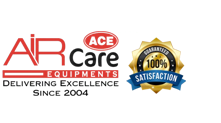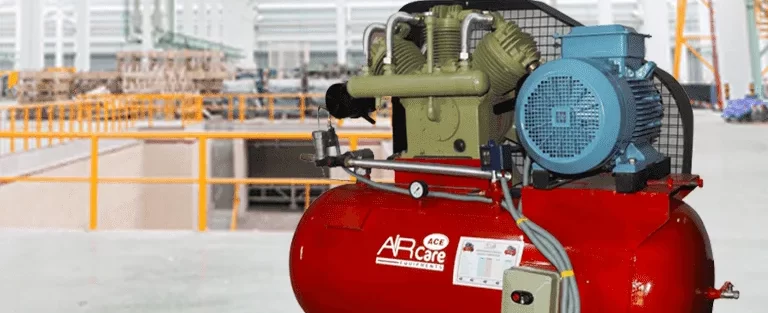Industrial air compressors are broadly categorized into 2 types based on operating mechanism. These are positive-displacement compressors and dynamic-displacement compressors. Positive displacement compressors have many types and have varying designs, parts, and applications. Reciprocating and Screw Air Compressors are the most popular positive displacement air compressors. The Industrial Air Compressor Manufacturers like Air Care Equipment offer multiple variants of these compressors to meet diverse industrial needs.. The air compressed by these is used in numerous applications. Though they work on the same operating principle, there are key differences in design, parts, and the nature of flow. In this blog, we will learn about these differences and the uses of each compressor.
Understanding Positive Displacement Principle
Before we get into reciprocating and screw compressors, it is important to understand what is positive displacement principle. According to this mechanism, the air is drawn in through the inlet valve into a chamber in a fixed volume. Once a sufficient amount of air is drawn, the inlet valve is closed. The piston or rotary screw compresses the volume of air, building its potential energy. When required, this compressed air is drawn out of the outlet valve at a certain pressure level. The compressor with a piston is called a reciprocating air compressor, as it does reciprocating motion; the compressor with a rotary screw is called screw air compressor, as it does rotational motion.
Reciprocating V/S Screw Air Compressor
Definition
RECIPROCATING AIR COMPRESSOR: The reciprocating air compressor is an assembly of a cylindrical chamber, valves, piston, connecting rod, crankshaft and motor. A receiver tank is required to store the air from this compressor. The piston moves in a reciprocating motion, powered by the crankshaft and motor. It compresses the air, which is then stored in the receiving tank. The air stored is used in various applications, such as the automobile, HVAC system, packaging, drilling, etc.
SCREW AIR COMPRESSOR: The screw air compressor has two intermeshed helical rotors that trap the air and compresses it through rotary motion. The rotation is continuous in these meshes, and the compression happens as the gap between them decreases.
Differences
- The main moving part in reciprocating air compressor (RAC) performs linear motion, while screw air compressor (SAC) performs rotary motion
- The RAC has more moving parts than the SAC, hence, the former makes more noise than the latter.
- RAC is better suited for intermittent, precisely-controlled air volume applications, while SAC supplies air continuously at a stable rate for high volume requirements.
Uses
RECIPROCATING AIR COMPRESSOR
- Automotive repair shops
- Pneumatic tools in manufacturing
- Air conditioning and refrigeration
- Blowing PET bottles
- Natural gas processing plants
- Gas Transmission Lines and Refining
SCREW AIR COMPRESSOR
- Jackhammers and Sandblasters in construction
- To power the looming and spinning in the Textile Industry
- Drilling Rigs in Mining
- Food Packaging
- Gas pipeline services, testing and exploration
- Road repair works
Conclusion
The key difference in both the compressor types lies in the construction and working mechanism. While both are based on positive displacement, they are used in different sets of applications. Air Care Equipment is one of the reliable Industrial Air Compressor Manufacturers, providing highly efficient solutions in a wide range. Our air compressors are widely used across industries for their high performance, reliability and durability.


